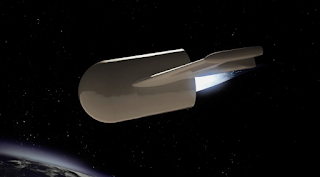WASHINGTON — NASA’s New Horizons spacecraft has exited a protective safe mode that project officials said July 6 was triggered when the spacecraft’s primary computer became overloaded.
New Horizons, which entered safe mode July 4, briefly cutting off communications with the Earth, will resume normal science observations on July 7, and the project’s leadership said they remain confident the spacecraft will operate normally through its July 14 flyby of Pluto.
“The spacecraft is in excellent health and is back in operation,” said Jim Green, director of NASA’s planetary science division, during a conference call with reporters July 6.
The problem took place, said Glen Fountain, New Horizons project manager at Johns Hopkins University Applied Physics Laboratory, because the spacecraft’s primary computer was doing too much at one time. Ground controllers were transmitting a set of commands to the spacecraft, called a “command load,” that it will carry out during the flyby. At the same time, the computer was compressing data stored from previous observations that controllers did not plan to immediately transmit back to Earth, freeing up memory to store new data.
“So we were doing multiple things on the processor on the spacecraft at the same time,” he said. The combination of compressing data and storing the command load was too much for the computer. “The computer was trying to do these two things at the same time, and the two were more than the processor could handle at one time.”
The spacecraft, Fountain said, worked exactly as planned, switching to its backup computer and going into safe mode. The backup computer started transmitting on schedule, allowing engineers on the ground to quickly diagnose the problem. “We realized what was happening,” he said, “and we put a plan in place to recover.”
The spacecraft exited safe mode on July 5, but the project team decided to hold off on resuming science observations until July 7, when the spacecraft will begin carrying out the uploaded series of commands for Pluto flyby. That sequence of commands runs through July 16, two days after the spacecraft’s closest approach to Pluto.
“That was a command decision which I made, and which the team was in complete agreement with, at the beginning of the recovery operation,” said Alan Stern, New Horizons principal investigator, on the decision to wait until July 7 to resume collecting science data. “It’s much more important to focus on getting ready for the flyby than to collect science eight or nine million miles from the target.”
That decision means losing about 30 observations planned between the time of the computer malfunction July 4 and when the spacecraft starts executing the new sequence of commands July 7. That includes 16 images by the spacecraft’s Long Range Reconnaissance Imager camera and four color images by another camera known as Ralph.
Those lost observations, Stern said, account for about six percent of the overall observations New Horizons planned to take between July 4 and 16. However, he added that since the observations were taken while the spacecraft was still millions of kilometers away, they were less significant scientifically.
“Our assessment is that the weighted loss is far less than one percent,” he said. “We can say there is zero impact to the ‘Group One,’ or highest priority science.” Stern characterized the overall science lost because of the computer problem as a “speed bump in terms of the total return that we expect from this flyby.”
Fountain said the specific problem that caused this safe mode won’t happen again: there are no plans to simultaneously upload commands and compress data through the July 14 flyby. “I’m quite confident that this kind of event will not happen,” he said.
The spacecraft will also execute the series of commands for the flyby in what Fountain called “encounter mode,” so that any problems like the one July 4 will not cause a safe mode. Instead, the computer will request help from ground controllers while continuing to carry out commands. Controllers can also send what he called a “slam” command to the spacecraft, forcing the computer to return to the series of commands in its memory for the flyby.
Stern said the spacecraft’s encounter mode has been tested several times earlier in the mission in preparation for the flyby, including a full nine-day rehearsal in 2013. “I’m not worried at all about going into encounter mode tomorrow,” he said.























